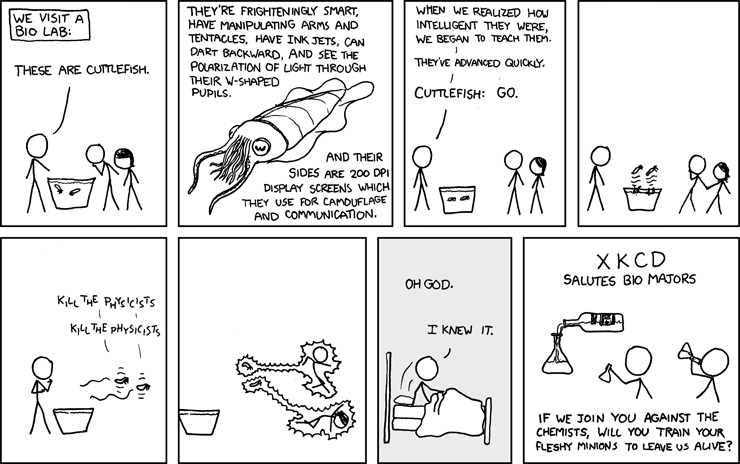Speaking through his character Lord Henry Wotton in The Picture of Dorian Gray, Oscar Wilde remarked that "The one charm of marriage is that it makes a life of deception absolutely necessary for both parties." Softy that I am, I disagree. However, there's no denying that your spouse being away awakens a part of your personality that slumbers when they're around. Guy Time is what happens when my family is out of town, and as my friends get married off, I find it's the same with them.
Take Dan, for example. My friend Dan is married to a wonderful woman named Sita who is a professional raw vegan chef. Dan is an amazing combination, equal parts hippie and South Philadelphia, and he is the kind of guy who I imagine gladly gobbles the awesome and healthy cuisine that is a part of the daily life of someone who lives in a raw vegan household.
Still, I know that Dan wasn't raised on nut milk and cashew cheez, so the following IM exchange last Thursday came as no surprise to me:
Dan: http://www.nytimes.com/2009/01/28/dining/28bacon.html
Me: Tempted. You?
Dan: I think maybe its important that we try it just once
Me: I think your spouse would have a hard time being present.
Dan: She's gone saturday ... ...
(. . . many instant messages and roughly 7 hours later)
Me: Operation Bacon Log is a go.
And so it came to pass that Dan and I cooked a Bacon Log (or, across the pond, perhaps a
Bûche de Lardon) this Saturday. For those of you who are as yet uninitiated, the Bacon Log (called by some
The Bacon Explosion) is a veritable
pigstravaganza. It is all the swine you would ever want to eat . . . in convenient log form. But why simply describe Bacon Log when we have pictures? Gaze upon the glory:
Bacon Weave

The log starts with a tightly woven mat of raw bacon. I swear I couldn't have gotten these any tighter if I was using a loom. I'm confident this mat could have held water. Those sprinkles are a garlic & onion rub.
The Enbaconing
Atop the bacon weave, you place a roughly 1" thick layer of sausage. On top of this sausage, you sprinkle some crisp cooked bacon — the delicious innards of the log. This crispy bacon will absorb the "juice" as the Log cooks. Yeah. It's "juice."
Pig Sushi (in a way)
Dan has completed the initial roll, trapping the crispy bacon in the middle of a raw sausage roll. Note that the bacon weave is still flat. At this point, it occurred to us that this is a lot like rolling a giant sushi. A GIANT SUSHI FULL OF
SWINY GOODNESS, THAT IS!
Initial Roll

Dan is preparing to roll the sausage back over the bacon mat. Tip for those of you keeping score at home: Use aluminum foil, like we did. It'll make if vastly easier to get the bacon to wrap tightly around the sausage without any unaesthetic slippage. No one wants bacon slippage. No one.
The Completed Log

Dan applies the finishing touches to the log, preparing it for the long journey that awaits it.
The Baking

Ever wonder why they call it
bacon when it's almost never
baked? Well, at this moment
Wikipedia tells me that
bacon "is derived from the Old High German
bacho, meaning 'back', 'ham', or 'bacon'." So
bacon is derived from another word that also means
bacon? I must say that I'm shocked.
2 HOURS CRAWL BY
Fresh from the Oven

If you look closely, the juice is attempting to escape from the log. The orange hue of the juice indicates that it is laden with Vitamin C. Yep. You heard it here first. The Bacon Log is loaded with all the nutrients and minerals that a growing body needs. My sources tell me that it contains enough Vitamin C to last a normal adult a full year.
Still Life with Bacon Log

This is the finest picture ever taken by a camera. Go ahead. Let the tears come. It's hard to be in the presence of such greatness.
The Carving

Dan carved the log with all the care of a vascular surgeon. I think all these years of living with a vegan has made him more sympathetic to the plight of those animals that become our food. His careful carving honored the pig(s) that had become this feast.
Oh, in the back of the picture you'll see a flask of "juice." I'd like to tell you we each did a shot of this. We did not. Well, there's always next time.
Plated with Salad

It was delectable. I scarfed down my plate and a second, and contemplated a third.
We brought the ample leftovers back to my house, where
Steph's mom shared some with me the next day. She was awed at how tasty it was, especially with a baguette (as, I'm told, they eat the
bûche in the old country). We agreed that it was perhaps the perfect food for watching a brunch-time football game on a fall day.
Dan had to ventilate the apartment before
Sita returned, but I doubt he's in trouble for introducing such a quantity of swine into their abode. After all, she got that cooking sheet specifically for him to cook bacon on. See, Mr. Wilde, it's no life of mutual deception after all. Even the raw vegan chef knows that sometimes her man must answer the primal call of
Bûche de Lardon, The Bacon Log.






























